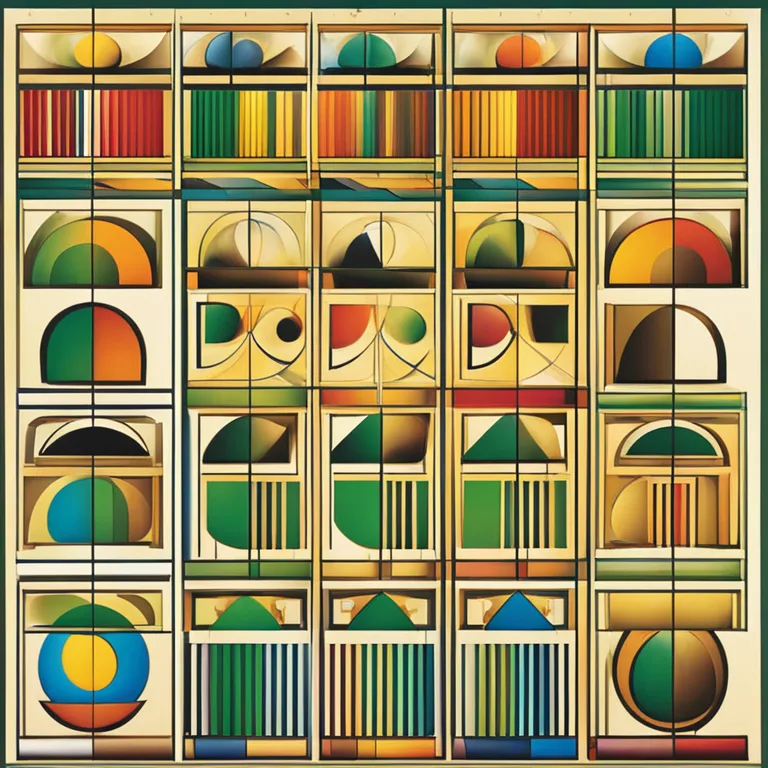
The Essence of Biorhythm Readings: A Modern Take
Delve into the world of biorhythms to uncover patterns of energy and gain insights into your personal well-being and future prospects.
article by Adrian Wallace
Introducing Biorhythms
In the realm of alternative well-being, biorhythms stand as a fascinating topic, offering insights into our daily lives based on natural cycles. As we step into the year 2024, the age-old study of biorhythms has gained contemporary relevance, intersecting with our quest for balance and understanding of our personal cycles. This piece aims to shed light on the basis of biorhythm readings, providing a modern interpretation of how these rhythms can influence our physical, emotional, and intellectual states and potentially guide us toward a harmonized existence.

The Three Primary Cycles
In the study of biorhythms, three principal cycles are recognized: the Physical (23 days), Emotional (28 days), and Intellectual (33 days). Each cycle is said to oscillate between positive and negative phases, influencing our behavior and experiences accordingly. The Physical cycle governs our strength, health, and endurance. The Emotional cycle steers our mood, creativity, and perceptions. Lastly, the Intellectual cycle oversees mental acuity, decision-making, and communication. By tracking these cycles, individuals might optimize their activities and decision-making processes.

Calculating Your Biorhythm
Today's technology has made it simpler to calculate personal biorhythms. With an individual's date of birth as a starting point, algorithms can chart out the peaks and troughs of these cycles. With a plethora of apps and websites offering biorhythm calculators—each touting improvements and precision—it's become increasingly accessible for anyone to explore their own biorhythmic patterns. By understanding our unique rhythms, we are better equipped to navigate times of high energy or heightened emotions and to plan tasks that align with our intellectual cycles.

Benefits of Biorhythm Readings
Proponents of biorhythm theory assert that by harmonizing with our natural cycles, we can enhance our daily performance and well-being. This might include selecting high-impact days for physical activities, managing emotionally challenging situations with greater ease, or choosing opportune moments for intellectual pursuits. Even skeptics can find value in the introspective aspect that biorhythm tracking provides, as it encourages mindfulness and self-awareness. In any case, the concept invites intriguing considerations of how we might live more in tune with our internal clocks.

Skeptical Perspective and Controversy
Mainstream science casts a skeptical view on biorhythms, citing a lack of empirical evidence supporting their predictive power. Critics argue that the human body operates on a multitude of complex systems that cannot be narrowed down to simple cycles. This criticism, however, has not dissuaded the continued interest in biorhythms, given the human desire to seek patterns and control within life's uncertainties. Biorhythm readings remain more of a personal and spiritual touchstone for those who find them useful, rather than a scientifically endorsed methodology.
Utilizing Biorhythm in Contemporary Life
In this modern era, biorhythms intersect with wellness trends stressing the importance of individualized health and self-care routines. Whether it's planning for peak productivity or navigating your personal relationships, incorporating biorhythm readings into your life may align well with practices such as meditation, yoga, or personalized diets. More than ever before, biorhythm tracking tools have adapted to contemporary needs, blending digital innovation with ancient wisdom to provide customized insights for a modern world.
Published: 1/4/2024
Modified: 1/4/2024
More predictions
Come back here soon to learn more about yourself and your future


The Practical Applications of Biorhythms
Delve into the practical applications of biorhythms and discover how they can influence your daily life and personal wellbeing.


Biorhythms Practical Uses Unlocked
Discover the applications of biorhythms in everyday life, from personal well-being to professional optimization.


The Practical Uses of Biorhythms in Daily Life
Discover the practical applications of biorhythms across various aspects of daily living, from personal health to decision-making.